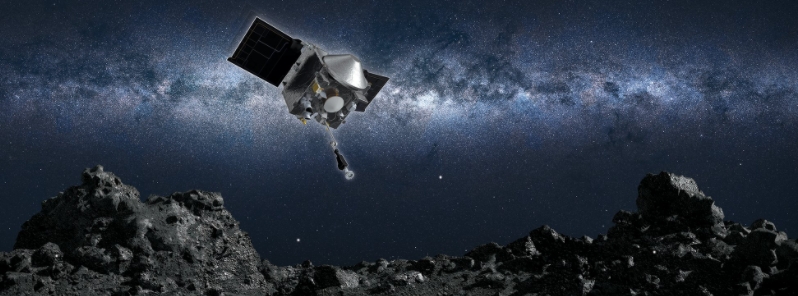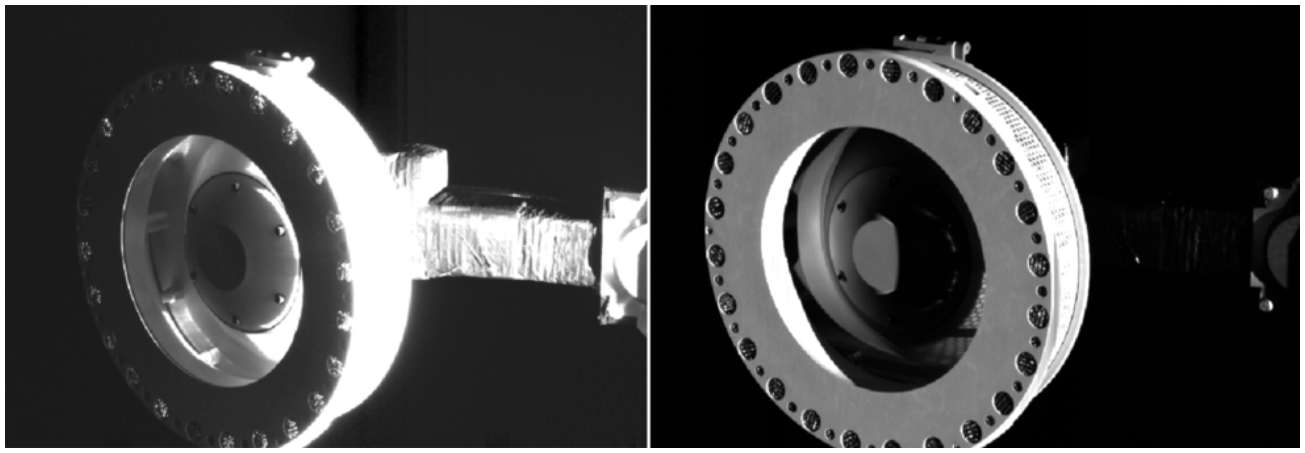OSIRIS-REx touches down on asteroid Bennu in ‘historic and incredible feat’

NASA's OSIRIS-REx (Origins, Spectral Interpretation, Resource Identification, Security, Regolith Explorer) spacecraft has successfully touched down on asteroid Bennu on October 20, 2020, in what was described by scientists as a "historic" and "incredible feat". After orbiting the object for two years, the spacecraft collected a sample from the asteroid's surface, which will be returned to Earth in 2023.
"This was an incredible feat– and today we’ve advanced both science and engineering and our prospects for future missions to study these mysterious ancient storytellers of the solar system," said Thomas Zurbuchen, associate administrator for NASA’s Science Mission Directorate at the agency’s headquarters in Washington.
Dante Lauretta, the OSIRIS-REx principal investigator at the University of Arizona in Tucson, remarked that the team is "overjoyed at the success" of the sampling attempt, after more than a decade of planning. In early May, the spacecraft successfully descended down to 76 m (246 feet) above Bennu's surface in a risky rehearsal.
"Even though we have some work ahead of us to determine the outcome of the event– he successful contact, the TAGSAM gas firing, and back-away from Bennu are major accomplishments for the team. I look forward to analyzing the data to determine the mass of the sample collected."
In August, the mission conducted another rehearsal, which brought the spacecraft through the first three maneuvers of the sampling sequence to a point about 40 m (131 feet) above the surface. Image credit: NASA/Goddard/University of Arizona
NASA Administrator Jim Bridenstine added, "This amazing first for NASA demonstrates how an incredible team from across the country came together and persevered through incredible challenges to expand the boundaries of knowledge."
"Our industry, academic, and international partners have made it possible to hold a piece of the most ancient solar system in our hands."
At 17:50 UTC (13:50 LT) the spacecraft fired its thrusters out of orbit around Bennu. It extended its 3.35 m (11 feet) sampling arm named Touch-And-Go Sample Acquisition Mechanism (TAGSAM), and transited across Bennu, descending around 805 m (2 640 feet) toward the surface.
Final slew coming up! This time I'll rotate to repoint the TAGSAM arm and navigation cameras toward Bennu's surface. Getting ready for touchdown. #ToBennuAndBack pic.twitter.com/2WjQ1TdwPW
— NASA's OSIRIS-REx (@OSIRISREx) October 20, 2020
Just passed the 25 m crossing. It's almost time pic.twitter.com/gJ9dU6KF5b
— NASA's OSIRIS-REx (@OSIRISREx) October 20, 2020
Currently 16 ft (5 m) above site Nightingale. No hazards in sight. I've determined I'm GO for TAG. Let's go #ToBennuAndBack
3-2-1… pic.twitter.com/lRCpnRJHCZ
— NASA's OSIRIS-REx (@OSIRISREx) October 20, 2020


TAGSAM. Image credit: NASA/Goddard/University of Arizona
OSIRIS-REx executed the "Checkpoint" burn after a four-hour descent, letting it accurately target the sample collection site called Nightingale. This site, which is the size of a small parking lot, is one of the few clear areas on the boulder-covered asteroid.
It fired its thrusters 10 minutes later for the second "Matchpoint" burn to slow its descent and match Bennu's rotation at the time of touchdown. It continued its 11-minute coast past a massive boulder called 'Mount Doom' — which is about the size of a two-story building — to touch down in a clear area in a crater on the asteroid's northern hemisphere.
"Today’s TAG maneuver was historic," said Lori Glaze, Planetary Science Division director at NASA Headquarters in Washington. "The fact that we safely and successfully touched the surface of Bennu, in addition to all the other milestones this mission has already achieved, is a testament to the living spirit of exploration that continues to uncover the secrets of the solar system."
TOUCHDOWN!
Sampling in progress #ToBennuAndBack pic.twitter.com/8dj2g8AUxK
— NASA's OSIRIS-REx (@OSIRISREx) October 20, 2020


Michael Moreau, OSIRIS-REx deputy project manager at NASA’s Goddard Space Flight Center in Greenbelt, Maryland, said he found it hard to put into words how "exciting" it was to hear the confirmation about the spacecraft's successful touchdown. "The team can’t wait to receive the imagery from the TAG event late tonight and see how the surface of Bennu responded to the TAG event."
Bennu, a well-preserved, ancient asteroid, is currently more than 321 million km (200 million miles) from Earth. This space rock offers scientists a "window into the early solar system," said NASA, as it was first taking shape billions of years ago.
The agency noted that it could have also helped seed life on Earth. If the sample on Tuesday provided enough, mission teams will command the spacecraft to start stowing the primordial cargo to begin its voyage back to the Earth in 2021. Otherwise, there will be another attempt in January. The spacecraft is scheduled to return to Earth on September 24, 2023.
"A piece of primordial rock that has witnessed our solar system’s entire history may now be ready to come home for generations of scientific discovery, and we can’t wait to see what comes next," said Zurbuchen.
Featured image credit: NASA/OSIRIS-REx

Commenting rules and guidelines
We value the thoughts and opinions of our readers and welcome healthy discussions on our website. In order to maintain a respectful and positive community, we ask that all commenters follow these rules.